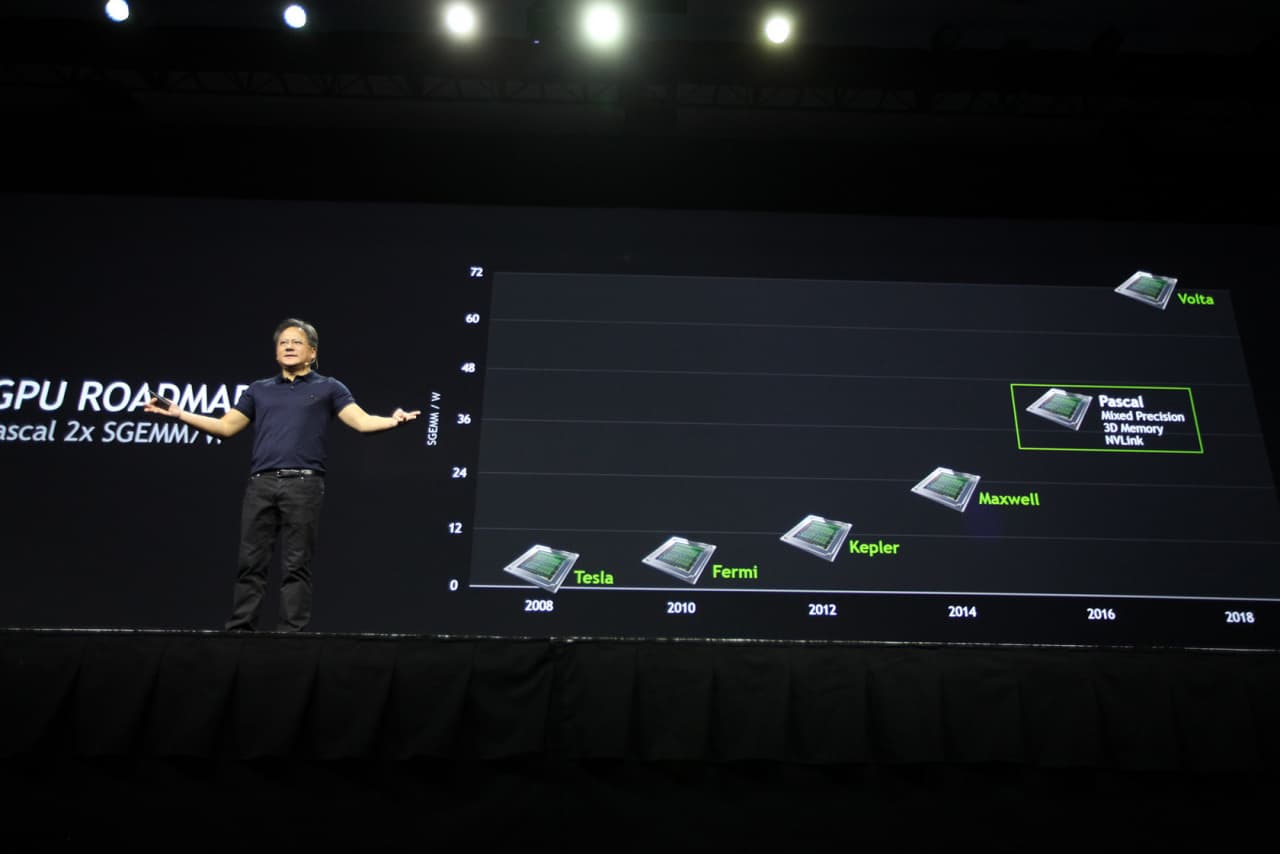The inauguration of the GPU Technology Conference is about the future of Nvidia’s graphics processors. The company’s CEO Jen-Hsun Huang predicts a coming decade of breakthroughs in machine learning and various forms of artificial intelligence, areas that require huge amounts of computing power and where the parallelized nature of graphics processors can come into its own.
After presenting the largest and by all accounts the final circuit in the Maxwell generation, Jen-Hsun Huang takes the opportunity to gossip about Nvidia’s future plans. Next in line is the architecture Pascal, which arrives in 2016 and not only delivers higher performance but also forms the basis for several new technologies.
Like the upcoming AMD Radeon R9 390X “Fiji”, Nvidia is investing in three-dimensional memory chips, or rather stacked memories. These are stand-alone circuits on a common substrate, in this case the second generation of SK Hynix’s current High Bandwith Memory. A memory bandwidth of a full terabyte per second is said to be within reach – three times up from Titan X.
At the same time, support is added for the own data bus Nvlink, a power-efficient and, above all, high-performance alternative to PCI Express. However, it can be suspected that this technology will be reserved for products intended for servers, data centers and other Enterprise-oriented applications while consumer-oriented graphics cards continue to use the industry standard PCI Express.
Finally, Nvidia focuses on mixed precision floating point calculations (FP16), which although provides lower precision than FP32 and FP64, but at the same time should help to reduce power consumption in GPGPU applications. The latter is particularly important for mobile devices, ie future incarnations of Nvidia’s Tegra system circuit.
On the whole, Pascal is expected to double the performance per watt compared to today’s Maxwell, not only as a result of the new architecture but also with a transition to 16 nanometer technology. However, Nvidia admits that this is a “very rough estimate” and that things can change during the course of development.
Last but not least, it can be noted that the architecture Volta reappears in the planning and now constitutes Pascal’s successor. The launch will take place sometime in 2018.















